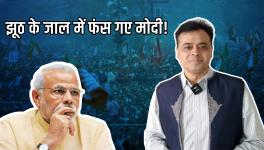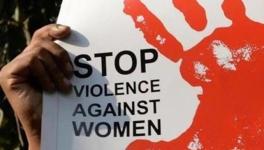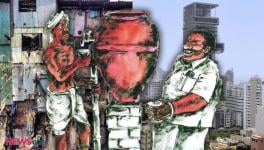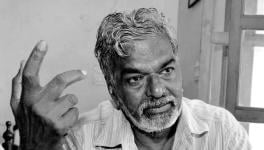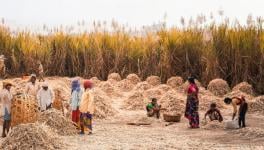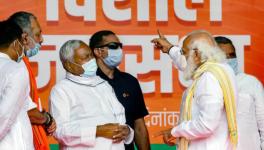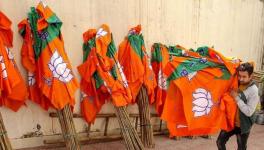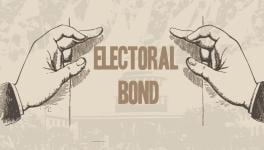Rajbanshis of North Bengal: Where They Stand Today on Identity, Basic Issues
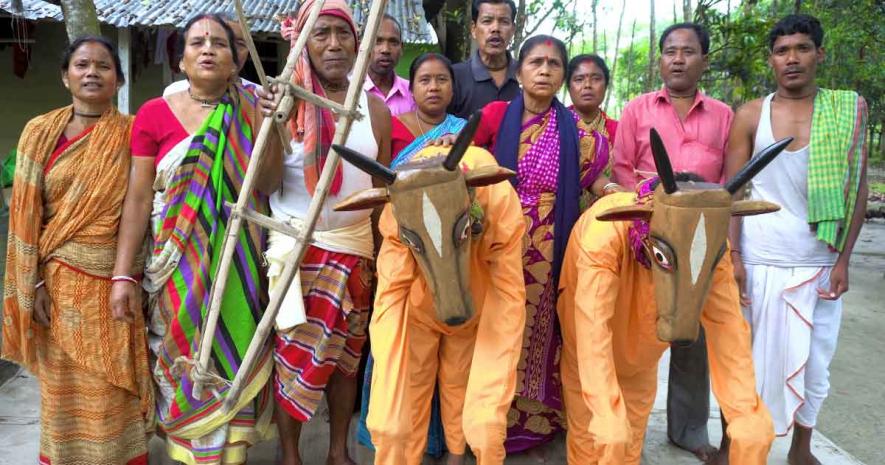
Representational Image
The specificities of the economy and society of the geographical area in West Bengal, consisting of Cooch Behar, Alipurduar, Jalpaiguri, Darjeeling, Kalimpong, North Dinajpur, South Dinajpur and Malda districts, have had their imprints on various socio-politico-economic activities and movements that unfolded in the region called North Bengal.
The region has seen various uprisings, such as the Tana Bhagat movement among the Oraon workers in the Jalpaiguri Duars, the Tebhaga peasant movement in Dinajpur and Jalpaiguri districts, the Naxalite movement in the Siliguri Terai belt of Darjeeling district and GNLF (Gorkha National Liberation Front) movement in the Darjeeling Hills to mention a few of them. The agitation in the Hills resulted in formation of the Darjeeling Gorkha Hill Council.
The Tana Bhagat and GNLF movements had elements of ethnic uprising, while the Tebhaga and Naxalite movements had class content at its core, which impacted the land tenure system across the country.
All these movements contributed to the complex social and political fabric in the region. But the social mobility movement among Rajbanshi Hindus, the largest group among the autochthons (original inhabitants) in all these districts, extended to the then Rangpur district of present Bangladesh and the then Goalpara district of Assam. The Rajbanshi Kshatriya movement had a long-term and, perhaps, permanent impact on the socio-political situation in North Bengal.
The movement grew amid the social, political and economic changes that took place during British rule, which caused a major dislocation in the socio-economic life of the rural population, resulting in narrowing down of opportunities and increased pressure on available resources.
During the British regime, the Rajbanshis were believed to have belonged to a semi-tribal community, settled agriculturists, using a plough drawn by bullocks. Their history included the history of Koches, Paliyas and, perhaps, Bodos. They were once a regionally dominant political power that founded several powerful kingdoms. Their precise origin, status and folk history, largely based on the accounts left by the colonial administrators and ethnographers however, have remained obscure.
Colonial pundits, such as Buchanon-Hamilton, Dalton, Risley, gave diverse and confusing opinions about the origins of Rajbanshis, sometimes describing them as aboriginals of Kamrup belonging to the non-Aryan groups, sometimes Dravidian or Mongoloid groups. In support of the thesis of fusion of different races, Prof. Suniti Kr. Chatterjee observed in 1951:
“The masses of North Bengal are largely of Bodo origin or mixed Austric-Dravidian / Mongoloid, where groups of peoples from lower Bengal (Bhati-desh) and Bihar have penetrated among them. They can now mainly be described as Koch i.e. Hinduised or Semi- Hinduised Bodo, who had abandoned their original Tibeto-Burman speech and have adopted the northern dialect of Bengali………………they are proud to call themselves Rajbansis and to claim to be called Kshatriyas.”
Author Charu Chandra Sanyal of Jalpaiguri, in his work, The Rajbansis of North Bengal, observed that the Koches were non-Aryan in origin, some of them adopted Hinduism and became Rajbanshis. Whether Koch or Bodo, the group appears to have gone through the parallel process of Hinduisation and Islamisation. This was the sort of interpretation given by the Aryan-centric scholars.
Rajbanshi intelligentsia, political leaders and social reformers, also being Aryan-centric, disagreed with what had been stated by the ethnographers about their ethnic identity, and emphatically denied any affinity between Rajbanshis on the one hand, and Koches, Paliyas and Bodo on the other.
Based on quotes from Hindu scriptures and epics, Rajbanshis claimed to be considered as Kshatriyas. Their arguments were that in the hoary past, they were known as Haihaiya Kshatriyas, who were being attacked by Parasuram and Sagar of the Bhrigu dynasty, and fled to places outside the Aryan territories (according to some accounts) to Paundra Desh in Bengal and Bihar and, according to other accounts, Kamrup). They took shelter among the non-Aryans, remained incognito and in the course of time lost their Kshatriya characteristics and identity. This claim received a fillip in later years, particularly in the early decades of the 20th century and came to be associated with a social reform movement, named the Kshatriya movement.
Under British rule, all the opportunities of livelihood, services and professions in the region under the Cooch Behar princely state, though the king was a Rajbanshi, came to be monopolised by upper caste Hindus and elitist Muslims. At the same time, new opportunities for social mobility were opened up through commercialisation of agriculture, improvement of communication and spread of education, though to a very limited extent.
These contrary processes generated new social tensions and strivings that partly found expression through the Rajbanshi Kshatriya movement. The movement centered on the claim at the time of the census of 1891 that the Rajbanshi Hindus were Kshatriyas of Aryan origin, against the census authority’s instructions to the effect that Rajbanshi is the same as Koch.
Several Rajbanshi zamindars and jotedars, led by one Harmohan Khajanchi, protested against this. Under the banner of Rangpur Bratya Kshatriya Jatir Unnati Bidhayani Sabha, they urged F.M. Skyne, then District Magistrate of Rangpur, recognised Rajbanshis as a separate caste and enumerate them as Kshatriyas in the census. On being requested by Mr. Skyne, the Dharma Sabha, an association of Brahmin pundits of Rangpur, after consulting the Brahmins of important places like Nabadwip, Mithila and Kamrup, gave the opinion that the Rajbanshis were of the Kshatriya origin, who have been degraded to a Bratya state due to non-observance of vedic practices, and that Rajbanshis and Koches were two different castes.
The Census Superintendent was asked to allow the Rajbanshis to be enumerated as Bratya Ksyatriyas and a circular was issued to the effect that the Rajbanshis could write their caste as Bratya Kshyatriyas in all official correspondence. This pacified the Rajbanshis and the movement subsided.
The movement, however, gathered momentum during the census of 1901 when the Rajbanshis, to their utter disappointment, found they were returned under the general head of Koch, a term much abhorred by the Rajbanshis, who realised that their claim was not acceded to because of opposition from sections of upper caste Hindus.
The movement spread throughout North Bengal, led by Panchanan Barma (Sarkar), the first post-graduate amongst the Rajbanshis, who after being driven out from Cooch Behar for his opposition to some affairs in the Raj family, joined the Rangpur Bar in 1901.
The socio-economic backwardness of the Rajbanshi Hindus, repeated refusal to accord them Kshatriya status, numerous instances of discrimination by caste Hindus, and the ill treatment meted to him, gave Barma the motivation to mobilise Rajbanshi Hindus to claim Kshatriya identity. Rajbanshi scholars and pundits compiled materials from history, folk tales, folk songs, proverbs and sayings to establish the claim of this status.
At the same time, the need for social reform was highlighted. Rajbanshis decided to strengthen the movement further prior to 1911 census. In May, 1910, several hundred Rajbanshis, mostly land holders, jotedars and peasants from different districts of North Bengal, Goalpara and Cooch Behar, assembled in a conference in Rangpur town and formed the Kshatriya Samiti with Madhusudan Ray, a lawyer from Jalpaiguri, as its president and Barma as secretary.
With the Samiti coming into being, “a most persistent agitation was carried on by the Rajbanshis”, in the words of L.S.S. O’Malley, the Census Superintendent of Bengal. The Samiti pressed that they be recorded separately from the Koch and be recognized as Kshatriyas by descent. While the first demand was conceded, the demand for recognition as Kshatriyas was turned down. This again contributed to the strengthening of the movement and social reforms.
The wearing of sacred thread, reduction of the days of mourning from 30 days to 13 days and change of surname from Das to Barma/Barman, Singha, Ray, Sarkar etc. were some measures adopted. Several thousand Rajbanshis congregated at Perolbari in Debiganj PS on the bank of Karatoya in the district of then Jalpaiguri and took sacred thread on Magh, 27, 1319 BS (February, 1913). Similar congregations were organised in subsequent years too. Even today, 27th Magh is observed in different places as the Upanayana Sanskara Divas by the Rajbanshis of North Bengal.
Guided by a small group of Rajbanshi lawyers and educated persons, the Samiti worked for the spread of education among members of the community, raised funds for providing loans to Rajbanshi farmers, and urged the latter to improve their agricultural practices and organise cooperative credit societies.
The Samiti condemned the caste Hindu practice of giving dowry by the parents of the bride. Kshatriya, the journal of the Samiti, dealt with various socio-economic problems facing the community and published several booklets on Hindu Shastras. The Samiti developed its links with the Bharatiya Kshatriya Mahasabha, an association of Rajput Thakurs in northern and western India. It appointed Pracharak or Ganya (distinguished) members devoted to the work of the Samiti and also Manya i.e. respectable members. The Samiti called upon the Rajbanshi youth to take training in physical exercise and learn the use of lathis, daggers etc. Responding to the call of the Samiti, several hundred Rajbanshi youth from Jalpaiguri, Rangpur, Dinajpur and Goalpara joined the British Army during the 1st World War. In recognition of this service Barma in the war in 1919, he was conferred MBE (Member of the British Empire) and the title “Rai Sahib”
Although the Samiti described itself as a non-political association, it took political positions at times. On the whole, the Rajbanshi Kshatriya movement represented an endeavour to find social identity and status and contained significant elements of dissent and opposition to upper caste domination. It exhibited Sanskritising tendencies with an assertion of Aryan origin and striving for the higher social status of Kshatriya by adopting higher caste customs and rituals. They emphatically rejected that the Rajbanshis and the Koches had a common tribal and semi-tribal past.
The Samiti attempted to get Shastrik sanction and recognition from Brahmin pundits. It kept itself away from the nationalist movement, sought opportunities for more jobs, education and political favours from the government, looked forward to a period of benevolent rule of the British and openly displayed its loyalty to the Raj. But the movement was confined mainly among large landholders, jotedars and better off peasants didn’t have any programme for the poor peasants and adhiars (bargadars), who constituted the bulk of the Rajbanshi Hindu peasantry.
The movement had to face some opposition from sections like the Bengali immigrants, including the Cooch Behar state officials, known i local parlance as Bhatias (people coming from the direction of Bhati or ebb tide) and even the other caste Hindus who opposed the move to accord them the Kshatriya status.
Though many Rajbanshi people were associated with Congress, participated in the nationalist movement and went to jail, the Kshatriya Society kept away from it and persisted with loyalty to the Raj. The educated upper caste bhadralok leaders of Congress, on the other hand, did not give any significance to the Rajbanshi Kshatriya movement which had been gaining momentum during the 1920s.
The Samiti participated in all the four elections held in the Bengal Legislative Council in 1920, 1923, 1926 and 1929 under the 1919 Act and achieved striking electoral success. In 1923, the Swarajists captured all the general seats but faced defeat in two seats contested by Kshatriya Samiti candidates Panchanan Barma and Nagendra Narayan Ray.
Expressing its firm loyalty to the British government, the Samiti demanded formation of a Rajbanshi Kshatriya battalion, nomination of an adequate number of Rajbanshis to the local government institutions, suitable measures for spread of education and increased job opportunities for Rajbanshi youths.
The movement had an implicit element of Hindu revivalism with at times an explicit anti-Muslim tone.
Instances of outrage of modesty of Rajbanshi and other Hindu women led to the concept of Dangdhari Mao or weapon-wielding Hindu women to combat this. Rajbanshi Kshatriyas and several other ‘non-untouchable’ backward caste groups formed Bangiya Jana Sangha, organised for demarcating the Kshatriyas, claiming higher social status from the Bengal Depressed Classes Association representing the Namasudras and other untouchable and depressed castes.
In the Memorandum to the Indian Franchise Commission (1932), Barma, on behalf of the Sangha, demanded that the Rajbanshis and other backward castes should be represented by ‘reserved seats……..through Joint electorate’. The Kshatriya Samiti also supported this demand under the Poona Pact, although it originally stood for a separate electorate for the backward castes. However, to take advantage of job reservation, special educational facilities and electoral politics, the Samiti asked for the status of Scheduled Caste although there was some reservation within the community about the sub-caste status.
The Samiti convinced the members with the agreement that scheduled implies included in a ‘schedule’ for educational, economic and electoral purposes and has no relation with the social status of any caste. Kshatriyas thus obtained the status of Scheduled Caste. And the 1935 Act providing for seat reservation for Scheduled Caste, met the major demand of the Samiti.
Though the movement hardly raised any agrarian issues, Upendra Nath Barman, the Kshatriya Samiti candidate for Jalpaiguri– Siliguri Constituency in the first election under the Govt. of India Act, 1935 held in 1937, claimed himself as a peasant representative and stressed on the deplorable conditions of the peasants irrespective of their caste and community. The Kshatriya movement became involved in the issue of political and economic reforms and improvement of social status took a back seat.
From the election results it became clear that the Kshatriya movement had considerable influence on the political life of Jalpaiguri and its neighbouring districts of Rangpur, Dinajpur and Cooch Behar. Upendra Nath Barman and five other Kshatriya MLAs, initially supporting the Muslim League- dominated coalition government, withdrew its support in 1938. Sections of Rajbanshi followers of the Samiti switched to the Congress.
A significant development in Jalpaiguri district during the period was the formation of the Krishak Samiti in December, 1938, whose impact soon came to be felt on the region’s political life. The major demands of the Samiti were abolition of the zamindari system and allotment of land to the tillers, stopping the collection of hat tola or levy by hat (market) owners and ijaradars from the middle and poor peasants, lowering of interest rates on karja dhan or petty loan taken by adhiars (sharecroppers) from the giris (landowners) and free primary education without imposition of cess. The movement led to the stoppage of collection of hat tola in the area.
This was followed by the adhiar movement which centered upon the relationship between jotedars and adhiars. The impoverished adhiars almost universally had to take consumption loan of paddy and seed loan from their giri or jotedar and had to remain indebted permanently. The adhiar movement in large parts of the three North Bengal districts was the first peasant movement in Bengal. Through such movements, a sort of solidarity and fraternity developed between the Rajbanshi Hindu and Muslim peasants, who unitedly foiled various divisive moves on the part of the vested interests. The adhiar movement prompted Rajbanshi Hindu jotedars to flock to the Congress or to the Kshatriya Samiti and Muslim jotedars to the League.
In the 1946 election, the Samiti fielded two candidates – Upendra Nath Barman and Girija Singha, who were defeated by Congress candidates – Mohini Barman and Prasanna Dev Raikat. But after the sudden death of Raikat in December 1946, Barman contested and won as a Congress nominee.
In September, 1946, the Bengal Provincial Kisan Sabha gave the call for tebhaga i.e. two-thirds share of the harvest in favour of the adhiars, as recommended by the Floud Commission in 1940. Debiganj, Pachagarh and Boda aeas of Jalpaiguri and adjacent areas of Dinajpur and Rangpur district provided fillip to the call. The movement spread to other areas as well. Between January-February and April 1947, the tebhaga issue flared up in the Duars amongst the tribal adhiars. By April third week, the partition of the country was accepted by both the League and the Congress leadership.
Barman ,identifying himself fully with the Hindu nationalists, said that “Bengal was confronted with a terrible catastrophe” and that the plan put forward by Sarat Bose and H.S. Suhrawardy for united independent Bengal was a ‘great political trap’ for the Hindus. The League leadership did not sit idle and Nawab Musharraff Hossain, a big jotedar of Jalpaiguri and owner of large number of tea gardens mounted a campaign for inclusion of whole of Jalpaiguri district in Pakistan.
The political situation was further complicated by the projection of the slogan of Rajsthan or creation of a separate Rajbanshi Kshatriya land under Cooch Behar State. In the Alipur Duars area, Rajbanshi Hindus and Muslims circulated leaflets in support of the Rajsthan slogan. The move appeared to have had support from Koch Bihar Hitasadhani Sabha, an outfit of Hindu and Muslim jotedars of Koch Bihar and ministers of Koch Bihar state, perhaps with a wink from Maharaja Jagaddipendra Narayan Bhup Bahadur, the Maharaja of Koch Bihar.
All these moves and counter moves and the League’s effort to get Jalpaiguri district or at least a part of it included in Pakistan, led to severe communal tensions with repercussions throughout the region and even the tebhaga areas could not remain unaffected.
With the freedom of India on August 15, 1947, the Debiganj – Pachagarh – Boda areas of the peasant movement went to East Pakistan. The Congress transformed itself into a component of ruling political force oriented basically toward preservation of social, political and economic stability. Nothing substantial happened to the peasant masses, adhiars, plantation labourers, tribals and other subordinate groups. The Left also failed to transcend the ambiguities of the processes of social change. The reason was said to be the continued dominance of elitist political leadership.
When all these things were happening within the region of British India, Koch Bihar remained mostly unaffected, as any political movement was prohibited by its king. The influence of the Samiti was on the wane during the 1940s partly because of the death of Barma in 1935 and partly by the greater involvement of the Rajbanshi elites in the nationalist movement under the Congress leadership.
However, in response to the persistent clamour for responsible government in the Princely States, an election was held in Cooch Behar. Koch Bihar Hitasadhani Sabha, a party of deshi (Rajbanshi Hindus and Muslims) jotedars and elites contested the election and won all the seats. The aspirations of deshi people got a big fillip. The subjects were practically divided into deshis and bhatias. Deshi people were made to believe that it was because of the bhatias that they were impoverished, and there was a call for driving away the bhatias from Koch Bihar.
The movement for awareness and self-assertion of the Rajbanshis started again under the banner of Hitasadhani Sabha, perhaps with a negative angle this time. The Sabha could achieve success in their motto by drawing the attention of the subjects to the fact that the deshi people were able to capture the power of administration at last and could achieve the ultimate goal of administering by themselves in course of time.
The Sabha however, could not draw any programmes for the welfare of the common subjects, nor could they legislate on any such laws because of their class characteristics. Deshi people of the neighbouring districts like Jalpaiguri, Dinajpur, Rangpur also could not be mobilised in that direction because of the effect of political movements like hat tola and tebhaga amongst the Rajbanshis in those districts.
Like all other princely states, Koch Bihar had to merge with the Dominion of India. The merger took effect on September 12, 1949 when it was decided to be retained as a Chief Commissioner’s state for the time being. The issue whether Koch Bihar would remain as such, or would go to Assam or West Bengal became a vexed question. The Sabha initially argued in favour of retaining Koch Bihar as a separate state and subsequently, joining with Assam, while Congress leaders were in favour of merging Koch Bihar with West Bengal. Taking into account the report of the Chief Commissioner and the incidents taking place throughout the country after Independence, Koch Bihar was merged with West Bengal with effect from January 1, 1950.
The feelings and emotions of the elite Rajbanshis were hurt. Khan Choudhury Amanatulla and other Muslim leaders went to Pakistan. Satish Chandra Singha Sarkar joined Congress along with others. The Hitasadhani movement thus got foiled but the emotions and feelings of the deshi people persisted.
The West Bengal government, under the Congress leadership, did not try to understand and appreciate the basic problems facing the Rajbanshis and as such paid little attention to removal of their grievances.
The political situation in the state saw revolutionary changes. Privy purse and the zamindari system were abolished, land reforms introduced with land ceiling laws, the Naxalite movement targeted against the jotedars of North Bengal caused widespread commotion, communist activities extended to Koch Bihar and got an unexpected response, bargadars/ adhiars were recorded on the lands of Rajbanshi, non-Rajbanshi jotedars and land owners. The landless and small farmer Rajbanshis gathered courage against the land owners who used to exploit them. With some measures for improving health and education situation taken by the state government, literacy and health conditions improved in the region. The aspiration of Rajbanshi youths also increased. There was, however, no parallel increase in the scope for employment.
With the partition of Bengal, there was influx of a huge number of refugees from East Bengal to the border districts of North Bengal. These people from East Bengal i.e. the bhatias, put tremendous pressure on the land-based rural economy. While the major portion of landed property owned by the Rajbanshi jotedars got vested and the vested lands went to the hands of landless people belonging to both Rajbanshi and non-Rajbanshis, the bhatias (non-Rajbanshi immigrants from East Pakisthan), by dint of their hard labour, frugal habits and some financial support from the state government as refugees, purchased the lands from the Rajbanshi jotedars.
This gave way to a feeling of discrimination by the state government policy, and Rajbanshis tried to mobilise public opinion against it by drawing the attention of the common Rajbanshis to the poverty, illiteracy, ill health facing them and the non-development of the region. This found expression in the form of various movements.
The first one of such uprisings is the Uttarkhand movement, a movement of a section of well off Rajbanshi people led by one Panchanan Mallik basically on the feeling of deprivation of the ‘sons of the soil’. This continued for some time and the government paid some attention to these problems. In the meantime, Left parties mobilised the public in their favour, taking advantage of the inner conflicts in the Congress, and the Uttarkhand movement lost ground.
Then came the Kamtapuri movement, which though based on ethnic sentiments, related primarily to the feeling of subordination of the Kamtapuri (not Rajbanshi) language and culture. Based on a non-conventional linguistic theory propounded by Dharmanarayan Barma, the leaders of Kamtapuri movement led by Atul Roy went to the extent of claiming that Kamtapuri, the language spoken by the Rajbanshis of North Bengal, was not a Bengali dialect but a separate language. Again, not getting adequate support on the issue from the major sections of the people of North Bengal, particularly Rajbanshis, the movement suffered a setback. Atul Roy along with some leaders joined the Trinamool Congress party. All the fire of Kamtapuri movement got extinguished with the death of Roy in June 2021.
The modus operandi of starting the movement is almost identical in all the cases. The leaders have spoken highly of the glorious history of Kamrup-Kamta as well as the Rajbanshis, narrated anecdotes of their social status and glorified life during the regime of the Kamrup-Kamta Kings. Side by side, they have tried to show the oppressed and depressed conditions of the ‘sons of the soil’ under the present regime.
The opinions of foreign and Bengalee Pundits about the anthropological identity and social status are not accepted by the Rajbanshis and as such their actual anthropological identity is disputed. A kind of neglectful attitude of the Bengalee Pandits toward the language, culture, customs, manners, food habits, social rituals etc. has been brought to the forefront to influence the Rajbanshi psyche.
The simple illiterate/average educated poor village people have naturally got influenced by the tickling of their emotions and sentiment of ‘sons of the soil’. There have been movements but with only some amount of impact, People gradually saw through the false promises made by leaders and withdrew their support.
The latest in the scene is the Greater Cooch Behar movement, which, too, appears to be motivated principally by emotions. One can have a good account of the reasons and emotions involved in the Demand of the Greater Cooch Behar People’s Association (GCPA), as available from their Memorandum submitted to Union Home Minister on June 18, 2005 and from the leaflet “Dangar Kuchbihar basir Koyta Katha” (A few submissions of Greater Cooch Behar residents).
The Association demanded that
(i) The Maharaja of Cooch Behar was forced to the accession of the State to the Dominion of India..
(ii) Merger of the state with West Bengal violated the commitment made by the Government of India.
(iii) In terms of the Instrument of Accession, Cooch Behar has been a C-category State which cannot be merged with West Bengal, a A-category State by a notification under section 290A of the Government of India Act, 1935.
(iv) In terms of the agreement, Government of India is promise-bound to meet the problems of Cooch Behar people.
History tells us that the whole affair of accession and merger of Cooch Behar happened as an event universally applied to all the princely states effected by the Dominion Government of India under the relevant provisions of the Government of India Act, 1935. Cooch Behar was merged with West Bengal and not with Assam or East Bengal, as demanded by various interest groups for strategic reasons; the circumstances prevailing in the State also justified its merger with West Bengal. As required under the provision of Clause (b) of Section 290A(1) of the Government of India Act, 1935, the Governor General ascertained the views of West Bengal Government and then, issued the order of merger. The leaders of the movement have somehow missed these politico-historical documents and misled themselves and continue to mislead people.
The other important demand of the movement leaders that the Cooch Behar was a ‘C’-Category state was also not based on facts. Categorisation of States into A, B, C & D was a concept introduced in the Indian Constitution coming into force on January 26, 1950.
The Greater Cooch Behar movement leaders had submitted their Memorandum to then Union Home Minister. The Home Ministry officials, the successors of Lord Mountbatten and V.P. Menon appear to have lost the capabilities of negotiation. Rather, the Union Home Minister and state Chief Minister in the subsequent years appeared to have encouraged GCPA leaders by taking them within their party folds and allowing subversive activities to continue.
All such movements could muster initial support from a large section of Rajbanshis because of the feeling of deprivation and exploitation in both urban and rural areas.
The problems could perhaps have been resolved had the authorities looked at the issues affecting the ethnic people of North Bengal with compassion and sympathy.
In recent years, the Rajbanshis have largely supported the two parties in power—Bharatiya Janata Party (BJP), in the Central government and Trinamool Congress (TMC) in the state. Both these parties promised various kinds of developmental measures benefitting the area and its people. But both have failed to keep their promise. Take the case of language and culture. Over a long period of time, BJP assured the Rajbanshis that Kamtapuri language will be given recognition. This has become a big hoax. One junior minister hailing from the Duars kept bluffing on the creation of North Bengal as a separate state. This was just like another bluff about a separate Gorkhaland for Darjeeling.
At present, amid parliamentary elections, some BJP MPs have been raising another bluff about making Cooch Behar a Union Territory. The Rajbanshis seem to have now realised that this ‘Brahminist’ party cannot do justice to Dalits, adivasis and Other Backward Classes. Also, there are charges of corruption against some BJP leaders, including some Rajbanshis who joined the party.
Similarly, the TMC, which is seen as equally corrupt, if not more, has also “duped the Rajbanshis” on all fronts. Chief Minister Mamata Banerjee has not done much for the region except for upgrading some administrative units and establishing a few boards with practically no administrative and financial powers. The Rajbanshis also feel “cheated” in the matter of employment of teachers and other jobs, implementation of programmes meant for SC/ STs who are a substantial population in North Bengal.
However, many among the Rajbanshis feel that the greatest bluff by Banerjee is in regard to their language and culture, especially, related to the recognition of Rajbanshi as the official language, without even bothering about the constitutional provision for it.
The following is the special provision relating to Official Language under Article 347: “On a demand being made in that behalf the President may, if he is satisfied that substantial proportion of the population of the State desire the use of any language, spoken by them to be recognized by that state, direct that such language shall also be officially recognized throughout that State or any part thereof for such purpose as he may specify”.
Moreover, the TMC government made Kamtapuri, claimed to be the real name of the Rajbanshi by followers of Kamtapur state, also an official language. To her, Kamtapuri, supposed to be a variant of Rajbanshi, is a separate language. It is alleged that she has done this with the objective of creating a division amongst the Rajbanshis. Not only this, the Chief Minister also announced establishing 300-odd Rajbanshi and Kamtapuri medium primary schools, allegedly to create “confusion” in the arena of education in North Bengal.
This is the way BJP and TMC are playing games with the Rajbanshis of North Bengal. The basic issues facing the people of North Bengal have not been addressed, including the Rajbanshis. How long should people of the region continue to remain victims of false promises made by political parties?
The writer is a former IAS officer and PAC Chairman on citizenship issues. The views expressed are personal.
Get the latest reports & analysis with people's perspective on Protests, movements & deep analytical videos, discussions of the current affairs in your Telegram app. Subscribe to NewsClick's Telegram channel & get Real-Time updates on stories, as they get published on our website.









